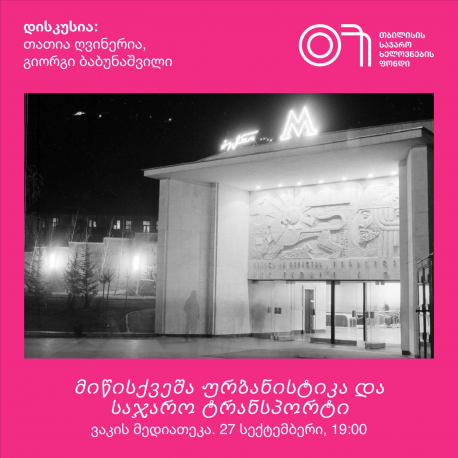 View larger
View larger

Dato Meskhi: Billboards around the City
= More info =
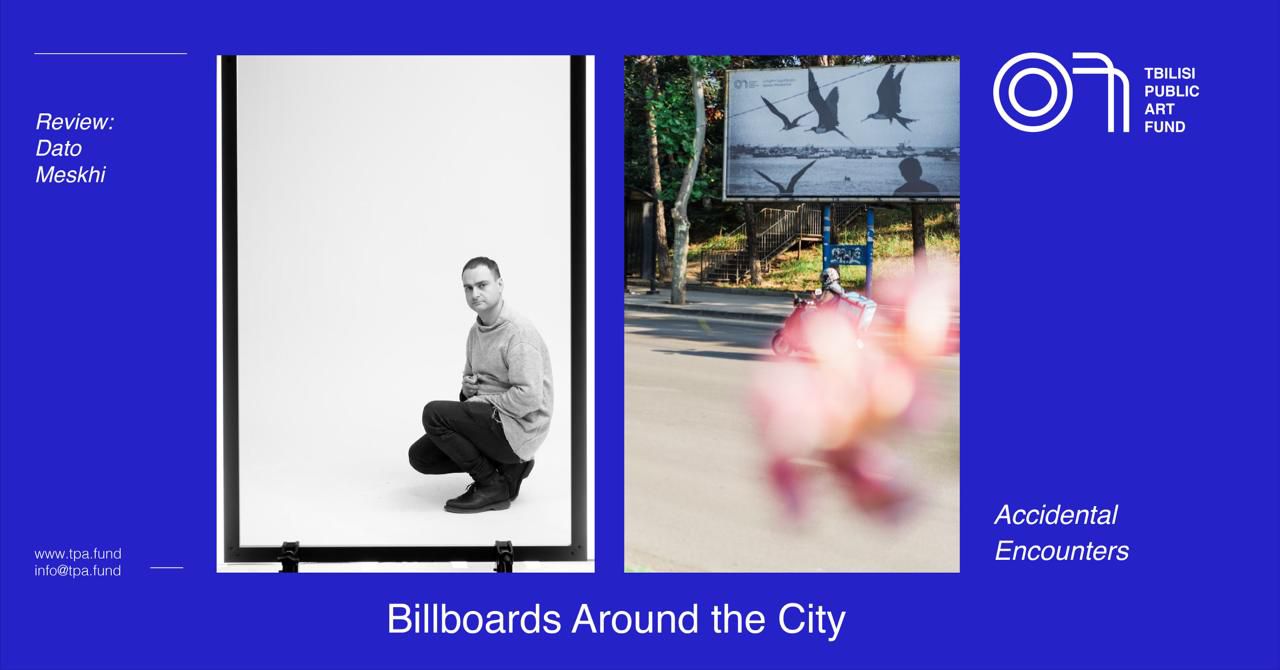
The fairly recently established Tbilisi Public Art Fund, so to say, keeps its hand on the heart of Georgian contemporary art, attempting not to miss a beat, and succeeding in it. In my observation, the fund equally advances itself and the Georgian artistic and public space. A clear example is the fund's seventh open call - Billboards around the City - winning project 'Accidental Encounters' - curator Elina Valaite.
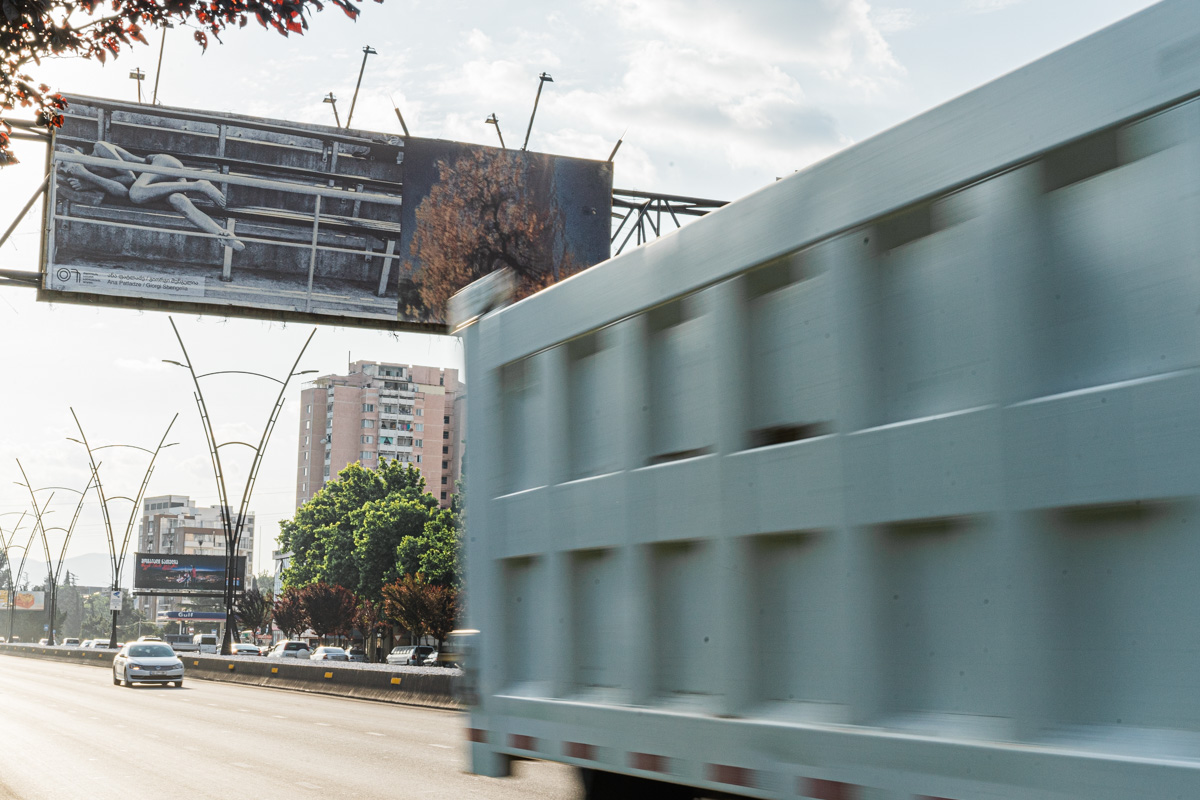
Ana Patladze, Giorgi Shengelia, Accidental Encounters
Kakheti Highway, photo: Dato Meskhi
By installing four photo-artists’ billboards in the capital, the fund aims to transform the urban space into a gallery. "Billboard is the central place in public space because it is intended to have wide visibility to people so they don't have to go out of their way to see it", the idea of the project was shared with me by the fund’s founder, Lika Chkuaseli. The winning project of the open call is the joint work of two well-established Georgian photographers, Giorgi Shengelia and Saba Gorgodze, and two emerging artists, Ana Fatladze and Sandro Khutsishvili. The authors discuss their ideas quite interestingly and also their experiences.
As the author of the interesting photo research created as an outcome of this exhibition, several critical questions arose: for example, to what extent can 'Accidental Encounters' become people’s art? Every day they reach tens of thousands of commuters, tourists, artists, the homeless, collectors, or birds, but what do these tens of thousands of visitors offer, what do they give back, what impact do they have? Do they communicate with it? Can it be that it’s a one-sided communication? Have we become accustomed to the fact that it must be so, that we notice it, but still move past it and do not express our views?
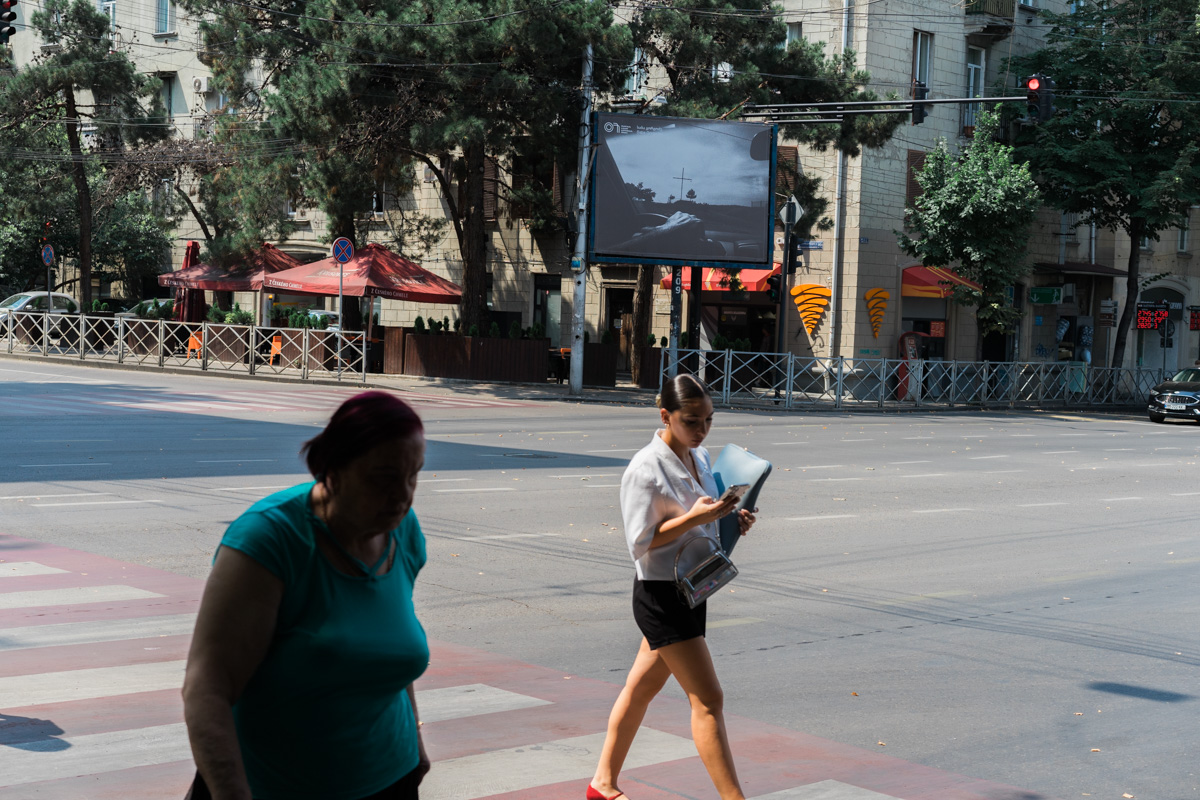
Saba Gorgodze, Accidental Encounters
Tamar Mepe Av., photo: Dato Meskhi
This is also a matter of contrasting value. The billboard is so fundamentally commercial and so universally read as a means of selling that it is difficult to see it as a neutral space for the public consumption of art. But, that doesn't mean billboards can't be artistic, communicative, or creative. I want to convey this idea and urge communication, and obviously, similar to an artist who needs space to grow, the audience must follow suit. Commercial and artistic side-by-side is an unusual encounter in Tbilisi. To an extent, this is an oddly effective juxtaposition, where art is the most "commercial" and commerce is the most "artistic". A few years back, I do not remember what was being advertised on the billboards at Vake Park, but I do remember they employed the work of an American artist, Jackson Pollock. I remember such effect and influence his picture had, how it shifted the context of the place and created an alternative space of thought or wonder. After this experience, as soon as the works, previously only seen in a museum or a gallery, appeared in the city, the purpose of this big exhibition suddenly became very clear to me: a good advertisement must touch the consumer, after all.
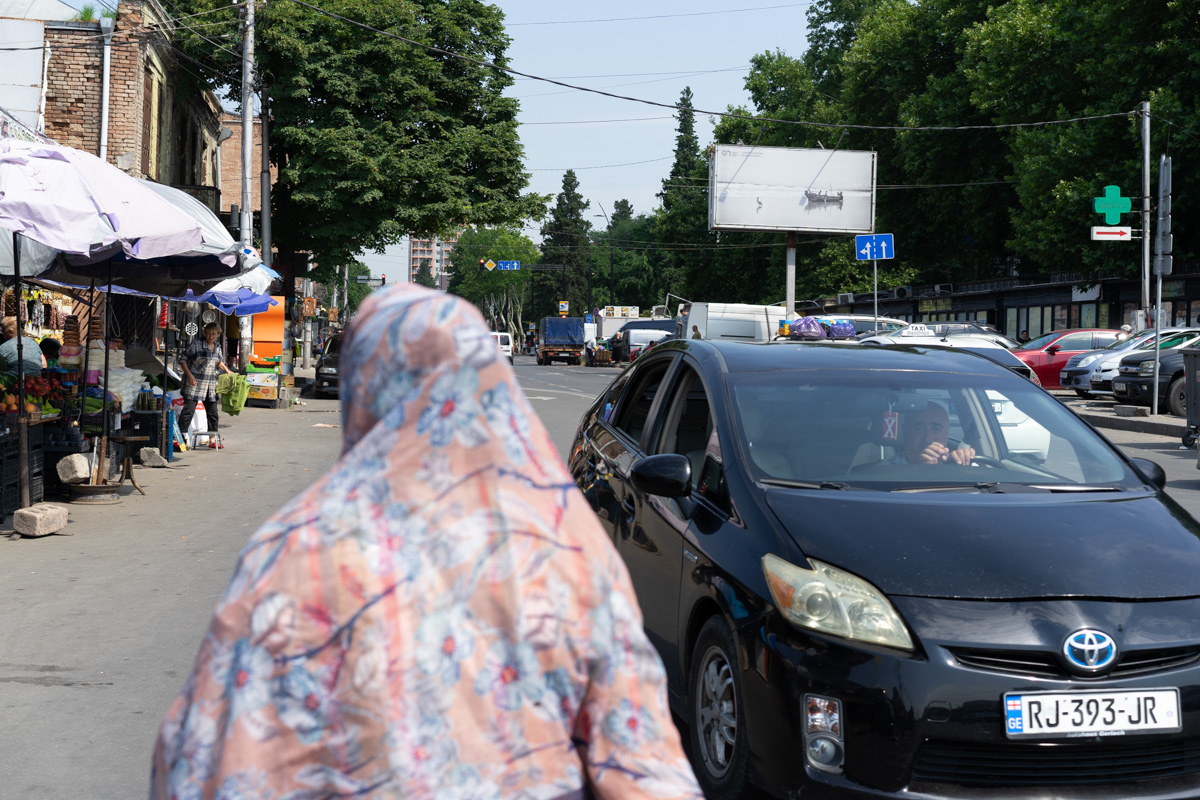
Sandro Khutsishvili, Accidental Encounters
Dezerteer's Bazaar, photo: Dato Meskhi
As for the exhibition and how I came across this group show: not so long ago I started running in the city, early in the morning, sometimes in the evening, and I got to know almost every corner of the city. Firstly, on my usual path, Ana Fatladze's photo work depicting an angel and Giorgi Shengelia's hand-made red color caught my eye. For the first time, I stopped at a place where I never stop, because for the most part, nothing interesting happens there, and even if it were to happen, I'd probably simply sprint by it. Despite its large scale, I began to look at it as if it were displayed in a museum sealed in glass. For me, photography is very personal and vulnerable. I want to point out that the exhibition in its entirety, regardless of scale, does not disregard this value, and I wish to share the sense of confidence with the authors that this photo enlargement brings. Then I found a map of the photo works and began to explore this great exhibition.
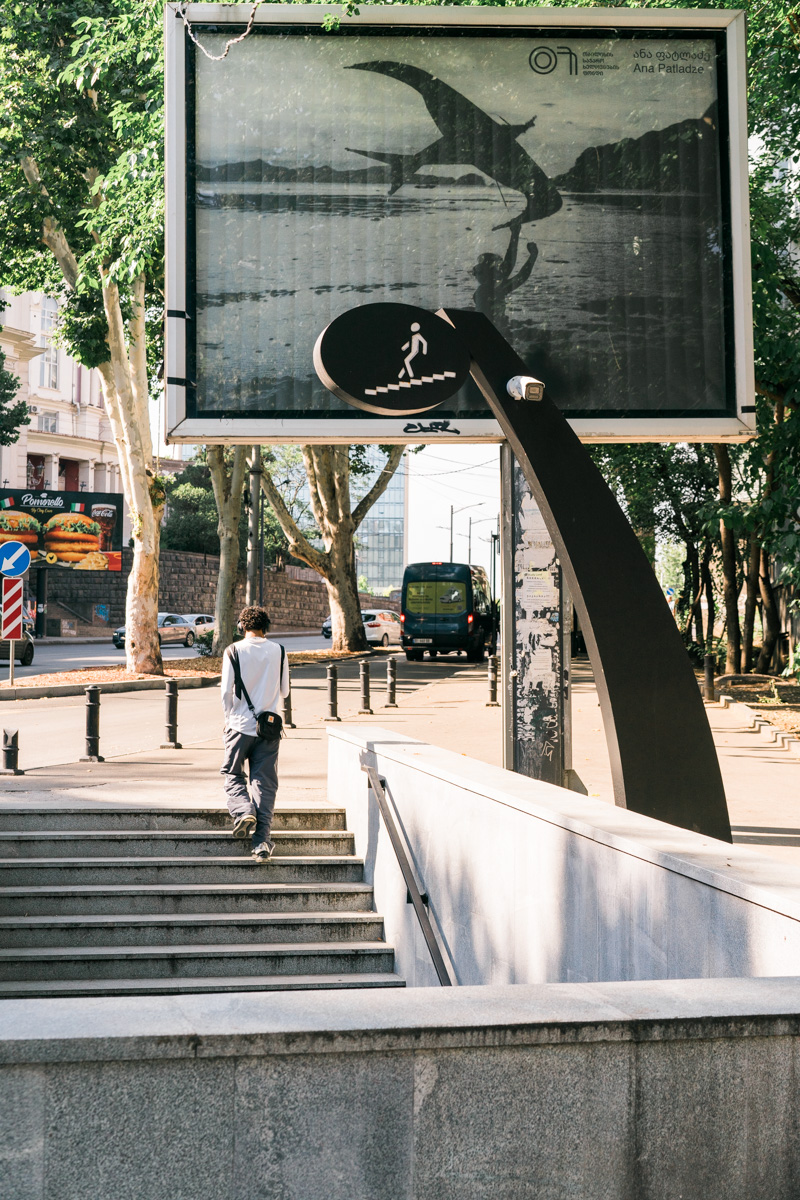
Ana Patladze, Accidental Encounters
Kostava Str., photo: Dato Meskhi
Part of the four is the one girl, Ana Fatladze, whose work became a discovery for me. Ana's photographs are thematically close to mine, aiming at alternating and combining a human gesture, an idealized moment, and heavenly and earthly states. Her visual language is a mix of photo experiments and photographs of a documentary nature, which gives the impression that she is still searching. In big contrast with her is Giorgi Shengelia's works, which have passed years of experience and developed a strong visual narrative form. Fragments and details merge and are scattered on different billboards in a way that the narrative carries on. I know Saba Gorgodze's work well, and I expected I would enjoy the large scale of interesting photos. I must say that Saba's shooting style is quite authentic; But personally, I had an issue with the genre confusion, I felt as if he sometimes contradicted himself in his display of these clashing works. It's as if different creators are fighting over who presses the shutter button and where and when. I first discovered Sandro Khutsishvili's photography on these billboards. For me, his practice fits the modus of the work done within the traditions of classical photography, which in the case of 'Accidental Encounters' creates the axis of the experiments that serve as a sort of protective mechanism aiding the image not to disintegrate, remain harmonious and stable. This is the perfect occasion if you're looking for inspiration and are eager to pick up a few pointers on the go, while out on the town.
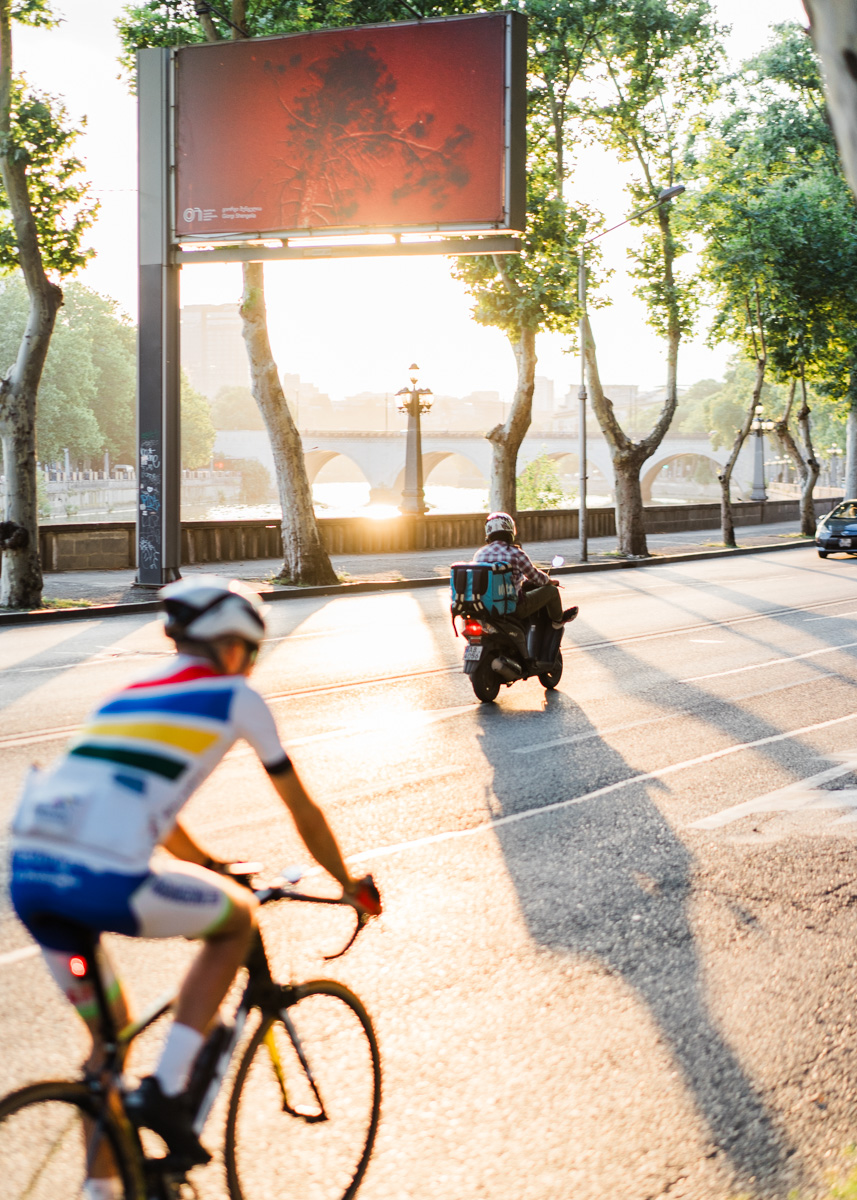
Giorgi Shengelia, Accidental Encounters
Left Embankment, photo: Dato Meskhi





